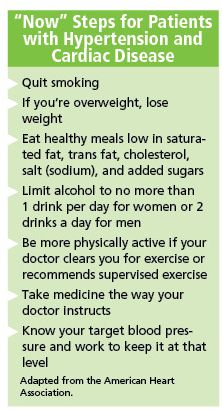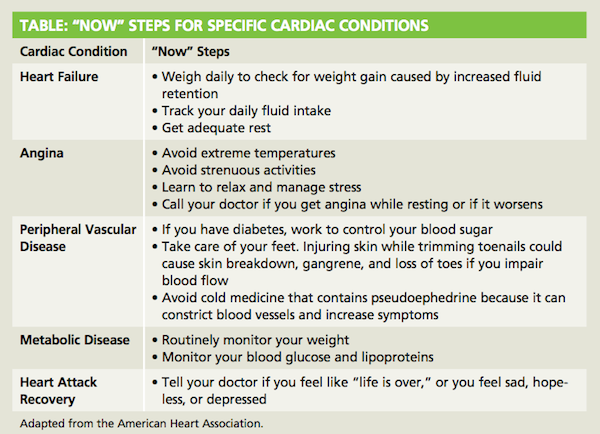The Power of Words: A New Approach to Counseling
Your counseling sessions have more impact with persuasive language.
Your counseling sessions have more impact with persuasive lanuage.
Recently, a patient asked a question about a potential drug interaction with an OTC antihistamine, saying, “I’m just worried because I have this heart business.” He could have meant any number of things, and with insightful questions, the pharmacist identified the patient’s specific “heart business” and routine medications. As the patient left, the technician complimented the pharmacist on what a good job he did on the “counseling business.”
Counseling is a “business” activity— it’s akin to health-promoting sales and marketing. Successful marketers and advertisers know that words can have powerful impact. Credible words encourage and persuade, changing peoples’ viewpoints. Some words can make customers more inquisitive or give them a sense of control. Using the following “miracle” words can help you improve, your message delivery.
1. The person’s name and “you.” A person will retain almost 70% more of a message’s content if you use his or her name within the first 3 words, and then again at the end. (Using a person’s name multiple times suggests manipulation, so don’t overdo.) The word “you” creates a personal connection, and helps patients sustain interest in your message.1 You’ll have more impact if you let patients know that your counseling is tailored to their unique needs.
2. Because. This word implies or clarifies cause and effect. It’s fine to tell someone to take lipophilic drugs including nifedipine, oral nitrates, verapamil, and propranol in the morning. Adding the “because” (because they generally are absorbed, reach the circulatory system, and attain a higher maximum plasma concentration more rapidly in the morning2) can help patients see that medication timing is logical. Be sure to use patient-friendly language.
Consider using the “chunk and check” method of communication. Communicate the information into small, easily understood bits, or chunks. (“Take this drug when you get up, because it works efficiently in the morning. [Pause.] “You’ll need lower doses. Lower doses, reduced chance of side effects!”) Then check that the patient understands (“So, when will you take this prescription?”).3,4
Adding a “because” to your counseling amplifies your message. Tell patients to take time-released antihypertensives at bedtime so peak effects occur in the morning when cardiac risk is highest.2 Mention that they should take selective serotonin reuptake inhibitors early in the day because taking them later can cause sleeplessness.5,6
3. Now. Marketing executives encourage advertisers to use the word “now” because it suggests the consumer should take action. Health care providers need to create a sense of urgency when cardiac disease is diagnosed. Emphasizing what patients need to do now is critical, and appropriate actions vary slightly by diagnosis. Some “now” steps are listed in the Table.


4. Imagine or discover. Many patients resent being told what to do. Asking them to imagine what life would be like with fewer symptoms, more energy, or not having to worry about finding a place to smoke or clean ashtrays can help them envision positive change. Framing change as a way to discover a better life can help patients visualize a future. Some patients cannot imagine, but love to discover. Encourage patients who like to research on the Internet or at the library to discover resources that appeal to them.7
5. Choice or strategy. Consumers often want control over problems or products. People also expect all health care professionals to inform and engage them in their personal health care decisions. Whenever possible, describe alternatives or engage patients in strategy building. Remember to use open-ended questions so patients can’t just say yes or no. Encourage them to ask questions, and invite their participation about how they will make lifestyle changes.
Faced with needing to eat better, lose weight, and quit smoking or drinking, many patients will feel overwhelmed. Attempting to make these changes concurrently usually fails.8,9 Negotiate so patients select lifestyle interventions that will help the most (usually smoking cessation, but if a patient is very obese or drinks heavily, that may not be the case), and suggest they ease into change with baby steps—ie, eating an apple instead of a bag of chips, taking a short walk after dinner. Using 1 intervention (exercise) as a strategy to boost another (diet) is also good.9 Remember that patients must choose how to proceed.10
6. Trusted and proven. Patients trust pharmacists to educate and protect them about their medications in a way that ensures confidentiality—the breadth and depth of that trust is enormous.11 They will trust your recommendations if over time you project confidence, your information proves true, and they see results (see below). To build this trust greet them warmly at each visit, and quietly ask about their progress. Using words like “trusted” and “proven” will also help because it shows that your recommendations are safe and you are applying science.
7. Results. Consumers like to see results, and so do patients. They need and want to know risks and benefits. Often, they may ask how quickly a medication will work; in the case of lipid-lowering agents or antidepressants, stress that it usually takes weeks. If it’s nitroglycerin, results will come in minutes, but so may a drug-induced headache.
Patients will also want to know what methods of pursuing lifestyle changes are most likely to bring results. Making public promises and commitments and tracking food and exercise are proven resultsboosters. Websites that allow users to commit themselves to specific goals and provide tools and coping mechanisms are very helpful.1 Develop a list of your preferred websites for losing weight and exercising (eg, myfooddiary.com), quitting smoking (eg, http://stopsmokingstayquit.blogspot.com), or pursuing any specific goal. Yale University’s stickk. com helps people make and achieve health goals.12
8. Free. Although many business executives recommend using the word “free,” they will admit it’s overused. Pharmacists can point out that lifestyle changes “won’t cost a penny” and may save money. (Have you seen the price of cigarettes lately?) Closely related to the concept of “free” is cost. Cost often drives adherence, with higher cost related to lower adherence. Addressing cost during counseling offers an opportunity to steer needy patients to patient assistance programs.13
Conclusion
Although words definitely have power, they aren’t magic. Powerful words combined with confident but empathetic delivery of proven, reliable information is your best ticket to results. Practicing with a coworker and asking for feedback from your supervisor or a trusted colleague can help you identify problems with your delivery.
Ms. Wick is a visiting professor at the University of Connecticut School of Pharmacy and a freelance writer from Virginia.
References
- Blumenthal-Barby JS, Burroughs H. Seeking better health care outcomes: the ethics of using the “nudge.” Am J Bioeth. 2012;12:1-10.
- Feng DL, Tofler GH. Diurnal physiologic processes and circadian variation of acute myocardial infarction. J Cardiovasc Risk. 1995;2:494-498.
- Greenhill N, Anderson C, Avery A, Pilnick A. Analysis of pharmacist-patient communication using the Calgary-Cambridge guide. Patient Educ Couns. 2011;83:423-431.
- Gann B. Giving patients choice and control: health informatics on the patient journey. Yearb Med Inform. 2012;7:70-73.
- Goldbeter A, Claude D. Time-patterned drug administration: insights from a modeling approach. Chronobiol Int. 2002;19:157-175.
- Hermesh H, Lemberg H, Abadi J, et al. Circadian rhythm sleep disorders as a possible side effect of fluvoxamine. CNS Spectr. 2001;6:511-513.
- Stop smoking, stay quit. http://stopsmokingstayquit.blogspot.com/2008/09/5-rs-to-helping-motivate-smoker-to-quit.html. Accessed October 15, 2012.
- Condon C, McCarthy G. Lifestyle changes following acute myocardial infarction: patients perspectives. Eur J Cardiovasc Nurs. 2006;5:37-44.
- Malpass A, Andrews R, Turner KM. Patients with Type 2 Diabetes experiences of making multiple lifestyle changes: a qualitative study. Patient Educ Couns. 2009;74:258-263.
- Koshy P, Mackenzie M, Leslie W, Lean M, Hankey C. Eating the elephant whole or in slices: views of participants in a smoking cessation intervention trial on multiple behaviour changes as sequential or concurrent tasks. BMC Public Health. 2012;12:500.
- Clark T, Kokko H, White SJ. Trust: an essential element of leaders and managers. Am J Health Syst Pharm. 2012;69:928-930.
- Stickk.com. www.stickk.com/about.php. Accessed October 6, 2012.
- Donohue JM, Huskamp HA, Wilson IB, Weissman J. Whom do older adults trust most to provide information about prescription drugs? Am J Geriatr Pharmacother. 2009;7:105-116.

